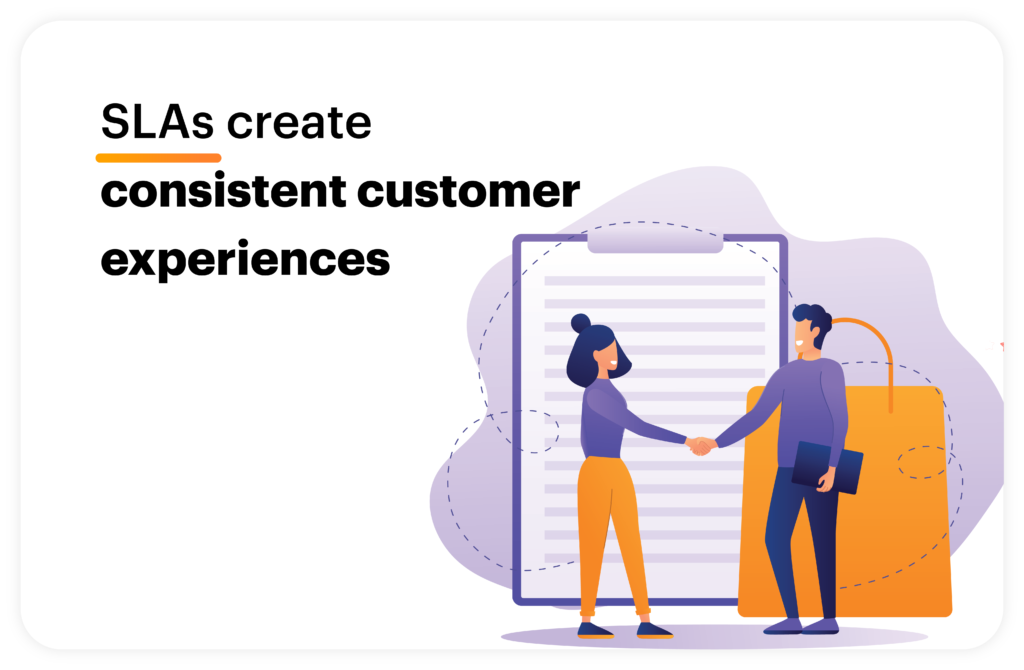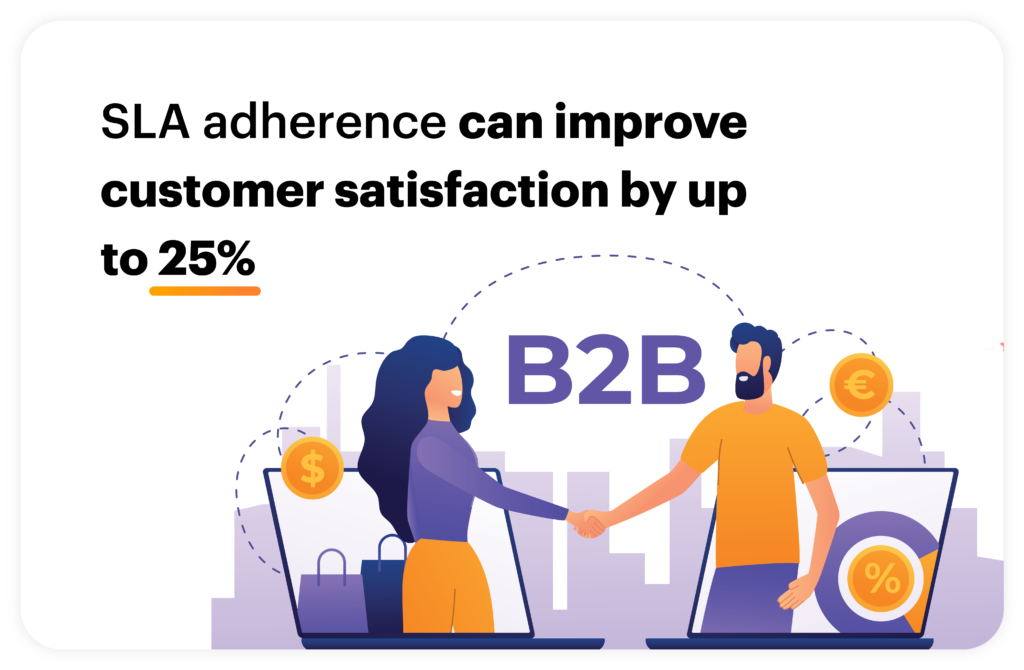Service Level Agreements (SLAs) play a vital role in maintaining consistent, high-quality customer support in B2B enterprises. In this article, I want to explore how to elevate your SLA strategy to create better customer experiences and improve the efficiency of your support engineers.

Align SLAs with Business Priorities
When crafting your SLAs, it’s essential to align them with your organization’s strategic objectives and customer needs. This alignment ensures that your support engineers prioritize tasks that have the most significant impact on your business.
Identify Key Business Goals: Start by recognizing the primary objectives of your enterprise, such as increasing revenue, improving customer retention, or enhancing brand reputation. This knowledge will help you establish SLAs that contribute to the achievement of these goals.
Understand Customer Segments: Determine your high-value customers, as well as those with unique or complex requirements. Tailor SLAs to address their specific needs, ensuring that they receive the appropriate level of attention and support from your team.
Prioritize Critical Services: Evaluate your service offerings and prioritize those that are most important to your customers and your business’s success. Establish stricter SLAs for these services to ensure they receive prompt attention and resolution.
Monitor Performance Metrics: Keep a close eye on your support team’s performance and make adjustments as necessary. If certain SLAs are not being met, investigate the cause and make appropriate changes to better align with business priorities.
Dynamic SLAs
To maximize resource allocation and maintain an agile support strategy, adopt a dynamic approach to SLAs. This involves adapting your SLAs based on factors such as customer segment, issue complexity, and seasonality.
Segment-Based SLAs: Establish different SLA standards for various customer segments, such as enterprise clients, small businesses, or customers with unique requirements. This allows you to allocate resources effectively and provide a personalized support experience.
Issue Complexity: Different support issues require varying levels of expertise and time commitment. Create SLAs based on issue complexity to ensure that your support engineers can allocate their time and resources efficiently.
Seasonality: Adjust SLAs based on expected fluctuations in support volume, such as during peak seasons, holidays, or product launches. This will enable your support team to maintain optimal performance and meet customer expectations, even during periods of increased demand.
Continuous Improvement: Regularly review and analyze your dynamic SLAs to maintain their effectiveness and relevance. Identify trends and make adjustments based on customer feedback and support team performance to ensure continuous improvement in support quality.
By aligning SLAs with business priorities and implementing dynamic SLAs, you can enhance the overall efficiency of your enterprise customer support team. This will result in improved customer satisfaction, increased loyalty, and a more robust competitive advantage for your B2B organization.
Regular SLA Review and Analysis
To maintain the effectiveness and relevance of your SLAs, it’s crucial to periodically review and analyze them. This process allows you to identify areas of improvement, fine-tune your SLAs, and ensure continuous support quality enhancement. Here’s how to approach its analysis:

Set Review Frequency: Establish a schedule for reviewing your SLAs, such as quarterly or biannually. This ensures that your support team consistently delivers up-to-date, high-quality service that aligns with your business goals and customer needs.
Analyze Performance Data: Collect and examine data on your support team’s performance in meeting SLAs. Identify trends, such as frequently missed deadlines or recurring customer complaints, to pinpoint areas for improvement.
Gather Customer Feedback: Actively solicit customer feedback through surveys, reviews, and direct communication. Use this feedback to gain insights into their satisfaction with your support services and identify any gaps in your SLAs.
Adjust SLAs as Needed: Based on your findings from performance data analysis and customer feedback, make any necessary adjustments to your SLAs. This might involve tightening response times, updating priorities, or revising service offerings.
Communicate Changes: Ensure that your support team and relevant stakeholders are informed of any changes to your SLAs. This will help maintain alignment and ensure that everyone is working towards the same goals.
Balancing Automation and Human Response in SLAs
When setting SLAs, you must strike the right balance between automation and human response. Overreliance on automation can lead to customer dissatisfaction, while insufficient automation may result in inefficiencies.
Assess Automation Capabilities: Determine the extent to which automation can efficiently handle customer inquiries without compromising the quality of support. For instance, automated responses can be useful for routine questions or basic troubleshooting but may not be suitable for complex issues requiring human expertise.
Set Separate SLAs for Automation and Human Response: Establish different SLA standards for automated responses and human-delivered support. This allows you to better manage and measure the performance of both aspects and make necessary adjustments to optimize your support strategy.
Monitor Automation Performance: Regularly evaluate the effectiveness of your automated support tools to ensure they are meeting their respective SLAs. If issues arise, take corrective action to address the underlying causes and maintain high-quality support.
Encourage Human Interaction: While automation can boost efficiency, it’s essential to recognize the value of human interaction in customer support. Ensure your support team is available and encouraged to provide personalized assistance when needed, which can greatly enhance customer satisfaction.
By regularly reviewing and analyzing your SLAs and finding the right balance between automation and human response, you can maintain a high-quality support experience for your customers, ultimately boosting customer satisfaction and loyalty for your B2B enterprise.
By aligning your SLAs with business priorities, adopting dynamic SLAs, and regularly reviewing and analyzing your agreements, your B2B enterprise can create a robust customer support strategy that benefits both your support engineers and your customers. Finding the right balance between automation and human response is crucial to ensure SLAs genuinely contribute to enhancing customer experiences and driving customer satisfaction.











